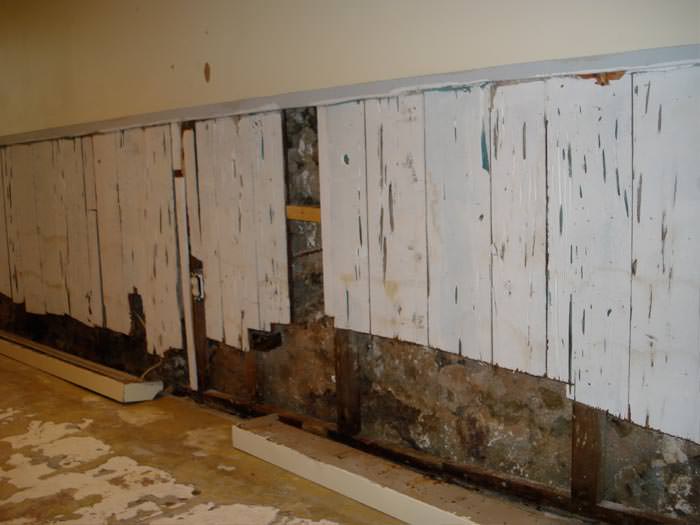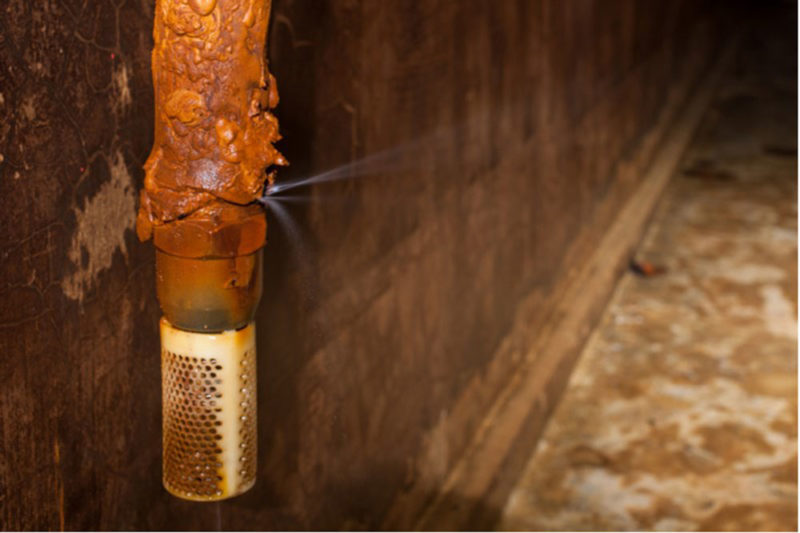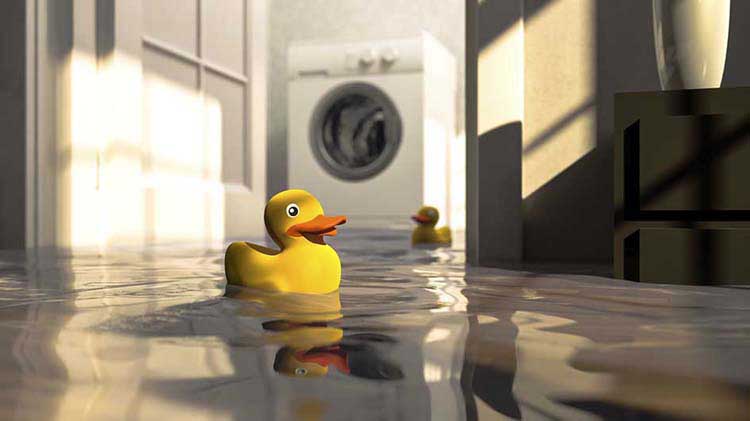Prevention and preparation are the best defense against water damage in your basement. While an event – like a burst pipe or heavy rain – may seem like the initial culprit, the truth is that water damage is often the result of many smaller problems that, taken together, lead to that flooded basement.
Do not hesitate!
Prior preparation prevents poor performance. Use this as your mantra. Don’t wait for this big event – getting caught unprepared is expensive and embarrassing! Instead, arm yourself with the knowledge to identify and prepare for the small problems before they lead to ruined property and a high repair bill. Waterproofing your basement before the next big storm could save your household tens of thousands of dollars in repairs and damage. Below is a handy reference for checking your basement for damage.
Check your pipes
Most basements contain your home’s water supply and drainage systems. The pipes in these systems are often not visible for aesthetic reasons – behind walls or cupboards. This is especially the case with finished and fully furnished basements. However, hiding these units and pipes can cause everyone to forget to check them out.
Smaller seepage can mean bigger problems
So you checked your pipes and found some moisture on an elbow joint where two pipes meet. You may tend to ignore this as it appears to be a small leak and the pipes need to leak a bit, right?
Unfortunately, many homeowners make this assumption, but their assumption has been proven wrong. Do not ignore this problem – Even a small leak can be an indicator of internal corrosion which, if deteriorated, can lead to a major burst pipe. Such breaks can flood a basement in a matter of minutes if hundreds of gallons of water flow through the cracked pipe per hour. Repairing the damage and restoring the basement costs a lot more than taking the time to periodically check your pipes several times a year and fix the minor problems as soon as they occur.
Use your nose
You may not be able to visually detect a leak, but your basement has a funky, pungent, and most revealing smell. Don’t assume that a basement should smell this way just because the smell comes from the basement. Moldy, musty smells are a direct indicator that there is plenty of moisture in your basement Mold, fungus, and mildew thrive.
Not only could this mean you have a leak, but it could also reveal dangerous health conditions in your basement. In such cases, it is best to contact both a professional plumber to fix any leaks and a professional mold and mildew remediation service.
Update to PVC piping if necessary
If you have an older home that hasn’t recently been renovated, your pipes are likely worn out and possibly even outdated. To prevent pipe failure, you should convert your cold water and drain pipes to PVC as a preventive measure – especially if you live in a region where the climate fluctuates quickly. PVC is durable, long-lasting, and inexpensive. This preventative upgrade can prevent potential water damage that can occur in systems with old or damaged pipe.
Know Your Property
As a homeowner, you need to understand the layout of your property and the seasonal changes your home will have to endure. Do you live in an inconsistent climate with hot, rainy summers and cold, snowy winters? Even if you live in an area where only one of these extremes occurs, you need to understand how weather conditions can put a strain on the foundations and resilience of your property to water damage.
As climate science suggests, our climate is changing rapidly. Climate researchers predict that Weather events are becoming more extreme. This means greater environmental pollution on your property and can potentially cost tens of thousands of dollars in damage if precautions are not taken.
Check your foundation
If you notice minor build-up in a low-lying area of your basement and have ruled out a leaky pipe as the cause, you need to quickly find the source of the water build-up and fix it.
If your basement isn’t finished, check the cement or masonry for cracks and cracks. Fast heating and cooling can put a strain on the foundation of your house not only directly, but also indirectly. The surrounding water table fluctuates with the seasons and weather conditions and puts different strains on your foundation. Small cracks grow when water penetrates them, freezes and continues to break.
Interpret the cracks
Cracks in the paint or mortar between the masonry
These types of cracks are not of great concern. Your repair is a matter of cosmetics and not a necessary step.
Cracks in the corners
Cracks often appear in the corners where two walls meet Drying shrinkage cracksthat can occur three to four years after the concrete foundation is poured. The surface of the wall will shrink faster than the core as moisture in the concrete is lost over time. This leads to cracks on the surface. This type of crack does not mean structural damage, but leakage can be a problem. These cracks should be sealed to prevent water damage.
Horizontal cracks
The most serious types of cracks are large horizontal cracks that appear along your basement walls. When you have a stone wall foundation, horizontal cracks are usually the result of vertical displacementwhere one side of the foundation settles. This is proof that your foundation is divided into two parts. If you see horizontal cracks in your poured concrete foundation, it means that the external pressure of the soil exceeds the resistance of the concrete wall.
These types of damage are associated with flooding because water from the surrounding soil easily flows into the cracks in the foundation. With these types of cracks, the damaged section of the wall must be replaced.
If you notice some of the later types of cracks in your foundation it will need to be repaired, upgraded, and weatherproofed to prevent further water damage. Do not hesitate! You may be a major storm event outside of a significant basement flood.
Landscaping as a preventive measure
If water is collecting on the outside walls of your home and you are concerned about leaks, design your property so that water is diverted away from areas where these potential leaks can occur. You can prevent basement water damage by adjusting the slope of your property and possibly installing an external drainage system.
If extreme landscape projects are unreasonable, you can plant trees and shrubs that are thirsty for water. These plants are happy to soak up excess moisture from your soil, reducing the chance of leaks. However, watch out for invasive roots as these can destabilize your foundation.
Knowledge is your best defense
It is better to understand the risks associated with basement flooding and to take preventative measures than to be caught unprepared with several feet of groundwater or sewage filling your basement. If you schedule inspections of your pipes and foundations several times a year, you can be sure that a small problem won’t quickly turn into a bigger, more expensive dilemma.
Being aware of changes in humidity and smell in your basement can help alert you to possible leaks. Knowing how your foundation responds to environmental stress and being able to accurately interpret the warning signs is also key to preventing a catastrophic basement flood. When it comes to water damage, the sooner you deal with the situation, the less money you will have to spend on repairs.
 Jennifer Bell is a freelance writer, blogger, dog lover, and avid beachgoer from southern New Jersey.
Jennifer Bell is a freelance writer, blogger, dog lover, and avid beachgoer from southern New Jersey.
She writes on behalf of Dry Basement Solutions.
 TopsDecor.com Home Decor Ideas
TopsDecor.com Home Decor Ideas






